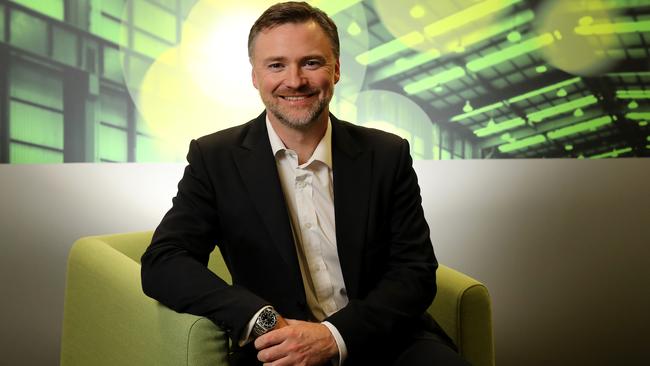Chief performance officers: the new realm for CFOs
No longer just bean counters, CFOs are helping to drive business performance.

Once upon a time chief financial officers were thought of as the company bean counters, the people who kept a close eye on the purse strings and financial management of an organisation.
Executive search expert Sheldon Harris Consulting co-founder John Sheldon says that role has evolved across the past decade and is likely to do so again within five years.
“They were moving from this vision of the person with their sleeves rolled up and skip cap on where all they did was count money, to a person working with the senior members of the company,” Sheldon says.
“What we’ve seen in Australia and of late is when you’re asked to go out and look for a CFO, we’re being asked for a greater breadth of skill. They’d normally cover finance and they’re expanding that to the strategic side and corporate relations.
“They say what they need is someone who can help them and understand digital disruptive technology because it’s a mishmash, and they need to know how to use it appropriately.”
Sheldon says the latest incarnation of the CFO, who now sits alongside the chief executive, is evolving even further and companies are slowly moving to employ people with more diverse skills such as chief performance officers.
The CPO role will combine human resources with finance, strategic operations, planning and evaluation skills, Sheldon says, along with understanding and using data analytics to improve organisational performance.
“Their role will include performance improvement, strategy — we’re now living in a digital world and disruption happens daily,” he says. “They’ll look at that disruption and what it’s producing, how do you harness that and put it to the organisation, and somebody has to pull that together. The requirements of the role are much more than we’ve ever seen before in this level. There isn’t going to be a queue of 100 people who can do it.”
Sheldon says CPOs need core skills — strategic planning, productivity and being forward looking — while harnessing data, designing appropriate reporting systems, creating and overseeing efficiencies, and taking a long-term developmental view of the organisation.
CPO roles are new to Australia — a quick Seek and CareerOne search shows next to no roles on offer — but international business networking site LinkedIn at least shows people working in those roles in the US.
The position entered the job market in the US and Canada in about 2009, shortly after Barack Obama created the role in his Office of Management and Budget.
Since then PwC has predicted the rise of the CPO, noting in its report Finance Matters: Finance Function of the Future that the chief financial officer’s role would evolve into a CPO, where the candidate would take a hands-on role beyond just finance and focus on improving performance across the entire company.
As the trend to study an MBA and upskill continues, Sheldon says the traditional CFO is becoming more skilled and being recognised for the additional roles performed.
Sheldon Harris studied remuneration at ASX top 50 companies between 2011 and 2015, and found CFO salaries rose 15 per cent over that period, while chief executive pay rates increased by 12 per cent, and other key personnel just 6 per cent.
“The role has expanded and changed and they’re more being rewarded for the broader experience, and there’s a bridging of the gap between a CFO and CEO,” he says.
Sheldon says top ASX listed companies are the likeliest to benefit from employing a CPO because the outlay will be returned in business performance improvements.
He predicts some will retain a chief financial officer and take on a CPO, but others will merge the roles to recognise skills.
“Looking into the crystal ball I don’t have, maybe five years from now a lot of organisations we’re talking about will have one of these,” he says. “The more people talk about what it could be and how it could benefit their organisation and shareholders, the more they’ll start to focus on it.”
Learning to grow the beans, not just count them
Energy Australia’s Alastair McKeown epitomises the changing role of the chief financial officer, and he has seen how it has moved on from traditional accountancy and economics.
“Part of my responsibility is driving performance across the business,” McKeown says. “It’s driving the business and future performance rather than what is happening at the moment. We’re finding the ways of growing the beans rather than counting the beans.”
McKeown, born and reared in Belfast, has worked in finance since studying economics and accounting in the early 1990s.
Beginning in auditing at PricewaterhouseCoopers, he moved into corporate finance, specialising in mergers and acquisitions, before going to London and an expanded role at Serco.
Once there McKeown began to push the role of the CFO into more of a chief performance officer position, learning about business models and growth. From Serco he moved to British energy company Centrica and helped it push into Europe and grow from being a one-asset business, along with improving performance.
In 2013 McKeown relocated to Melbourne with his Australian wife and their two children, taking up a role at Victoria Power Networks.
The company had just appointed a new chief executive and McKeown spent two years helping enact a capital restructure and making changes so that it could adapt to changing markets. In June he moved to Energy Australia, where he has been working in an expanded role to expand the company into a world-class retailer and sustainable energy provider.
McKeown says CFOs are ideally placed to drive change because they understand a company’s underlying financial position, along with having an analytical thinking process.
“It’s about getting under the hood of the business and making sure you know what makes the business tick.”


